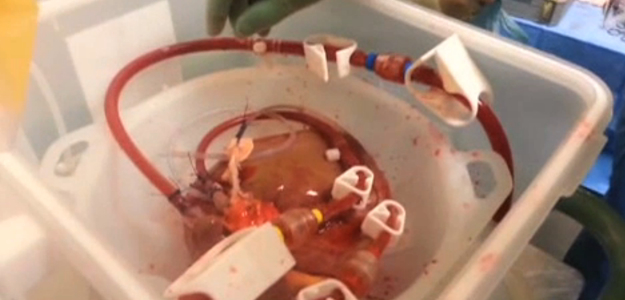 We’re all familiar with the scenario from countless medical TV shows: A dying patient needs an organ transplant, but the closest donor – who had just been in some kind of terrible accident that leaves their organs up for grabs – is so far away that the doctors aren’t sure they can get it to the hospital in time before it starts to fail. Sure, TV shows and movies tend to fluff things, but it’s a possibility in real life too. And thanks to new technology unveiled in London, England, that kind of situation will no longer be an issue – at least when it comes to liver transplants.
We’re all familiar with the scenario from countless medical TV shows: A dying patient needs an organ transplant, but the closest donor – who had just been in some kind of terrible accident that leaves their organs up for grabs – is so far away that the doctors aren’t sure they can get it to the hospital in time before it starts to fail. Sure, TV shows and movies tend to fluff things, but it’s a possibility in real life too. And thanks to new technology unveiled in London, England, that kind of situation will no longer be an issue – at least when it comes to liver transplants.
The technology was unveiled by its creator, Peter Friend, who works as the professor of transplantation surgery at the University of Oxford in the United Kingdom. His invention allows donated liver to be kept in stasis for up to 24 hours at body temperature, with the organ being supplied with blood, oxygen, sugar, and other nutrients as if it was still inside a human body.
In addition to keeping the liver in working condition for longer traditional methods, Friend says that “in animals, we’ve gone up to 72 hours [in the tech] and see no reason why it shouldn’t go even further than that,” suggesting a significant extension time between extraction and transplant for human patients. The technology also allows doctors to check the condition of the liver once connected to see how well it functions before the transplant is completed. Constantin Coussios, who developed the tech with Friend and founded the company OrganOx, plans to make the technology commercially available to “gives the opportunity to test-drive the organ before transplanting it.”
Twenty people are currently in a clinical trial for the technology, and so far, two patients of King’s College Hospital in London received new livers that had been kept alive using the artificial body. In order to compare this particular method of prolonging the liver life outside the body with current methods such as freezing, further trials are reportedly planned. Still, it looks as if the technology may be approved for use in Europe as early as next year based upon the results of the current London testing.
Even better news comes from Friend, who says that he believes that the same basic technology could be adapted for other organs, including the pancreas, lungs, small bowel, and kidneys. Soon, transplants may become less of a race against time than what’s traditionally been the case – and if the ability to “store” organs evolves to keep them in working order even longer, it may take a lot of the emergency out of the procedure altogether.


